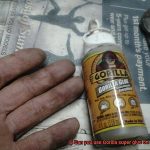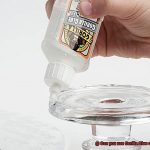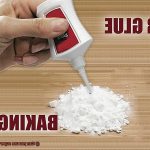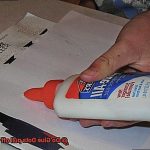Nail glue, a specialized adhesive, serves the purpose of attaching artificial nails or nail enhancements to natural nails. Popularly used in nail salons and by individuals seeking to enhance the appearance of their nails, this adhesive solution is a clear and fast-drying formula that creates a strong bond between the natural and artificial nails. Its primary objective is to withstand everyday activities and keep the artificial nails securely in place for an extended period.
Available in various forms such as brush-on, squeeze tubes, or pre-applied adhesive tabs, nail glue’s key ingredients are cyanoacrylate and ethyl cyanoacrylate. These acrylic-based compounds react with air, resulting in a chemical reaction that causes the glue to solidify and form a firm bond with the surface it is applied to.
However, it is crucial to note that nail glue should not be used on natural nails as a base coat or top coat. Such misuse can lead to adverse effects like weakened natural nails and potential allergic reactions. To ensure safe usage, it is imperative to follow the instructions provided by the manufacturer. Nail glue should be applied in well-ventilated areas while avoiding direct contact with skin or eyes.
In case of accidental contact with skin or eyes, thorough rinsing with water is advised, and medical attention may be necessary.
Advantages of using Nail Glue as a Substitute for Liquid Latex
Contents
- 1 Advantages of using Nail Glue as a Substitute for Liquid Latex
- 2 Disadvantages of using Nail Glue as a Substitute for Liquid Latex
- 3 How to Apply Nail Glue as a Skin Barrier
- 4 Odor Considerations when Using Nail Glue
- 5 Additional Benefits of Liquid Latex
- 6 Considerations when Choosing Between Glue and Liquid Latex
- 7 Conclusion
When it comes to nail art and manicures, the right products can make all the difference. Nail glue, often overlooked as a substitute for liquid latex, offers a range of advantages that can elevate your nail game to new heights. Here are the key benefits of using nail glue instead of liquid latex:
- Strong Adhesion: Nail glue is a powerhouse when it comes to adhesion. Its specially formulated formula ensures a secure bond that keeps your nails and artificial nails in place for an extended period. With nail glue, you can say goodbye to worries about your nail art peeling or chipping prematurely.
- Quick Drying Time: Time is of the essence, especially when you’re in a rush to get your nails on fleek. Nail glue saves the day with its lightning-fast drying time. In just a matter of seconds, your nails will be ready to flaunt without any delays or smudges.
- Versatility: Nail glue isn’t just limited to securing artificial nails. It’s a multitasker that can fix broken or chipped nails with ease. Additionally, you can let your creativity run wild by using nail glue to attach dazzling nail accessories or create unique designs with decorations and rhinestones.
- Long-Lasting Results: With nail glue, your nail art will go the distance. Its strong bond forms a secure seal that can withstand everyday activities and exposure to water. From washing dishes to typing away at work, your nails will remain flawless and intact.
- Availability and Affordability: Convenience meets affordability with nail glue. You can find it readily available in beauty supply stores, drugstores, and online platforms. Plus, compared to liquid latex, nail glue often comes with a more pocket-friendly price tag, making it a cost-effective choice for budget-conscious individuals.
- Suitable for All Nail Types: Whether you prefer natural nails, acrylic nails, or gel nails, nail glue can handle it all. Its compatibility with different nail types makes it a versatile option that anyone can rely on for their nail enhancement needs.
Disadvantages of using Nail Glue as a Substitute for Liquid Latex
Using nail glue as a substitute for liquid latex may seem like a convenient option, but it comes with several disadvantages.
Firstly, nail glue is not specifically designed for use on the skin. Liquid latex, on the other hand, is formulated to be gentle and non-irritating. Nail glue may contain harsh chemicals that can cause irritation or allergic reactions when applied to the skin. This can lead to redness, itching, and discomfort.
Secondly, nail glue has a much stronger bond than liquid latex. While liquid latex can be easily peeled off the skin, nail glue may require the use of harsh solvents or acetone to dissolve the bond. This can be damaging to the skin and nails, leading to dryness, brittleness, and even breakage. Regular use of nail glue on the skin can weaken the nails and make them more prone to damage.
Thirdly, nail glue dries quickly and can be difficult to work with. Liquid latex has a slower drying time, allowing for more precision and control when applying it to the skin. This is especially important when using it for nail art or creating intricate designs. Nail glue may dry too quickly and become clumpy or uneven when applied.
Additionally, nail glue is not flexible once it dries. If you apply nail glue to your skin and then move or stretch that area, the glue may crack or break apart. Liquid latex, on the other hand, can withstand movement without cracking or breaking, making it more suitable for areas that experience frequent movement like the fingers.
Furthermore, nail glue may not provide the same level of protection as liquid latex. Liquid latex forms a barrier on the skin that helps prevent staining from nail polish or other products. It also acts as a barrier against harsh chemicals found in nail products, providing added protection for the skin. Nail glue does not offer these protective benefits.

Lastly, nail glue may not have the same longevity as liquid latex. Liquid latex can be worn for extended periods of time without losing its effectiveness or adherence to the skin. Nail glue may start to peel or lift after a short period of time, requiring frequent reapplication.
How to Apply Nail Glue as a Skin Barrier
Nail glue can be used as a skin barrier to protect the surrounding skin from being stained or damaged by nail polish or other nail products. Here’s how you can apply nail glue as a skin barrier:
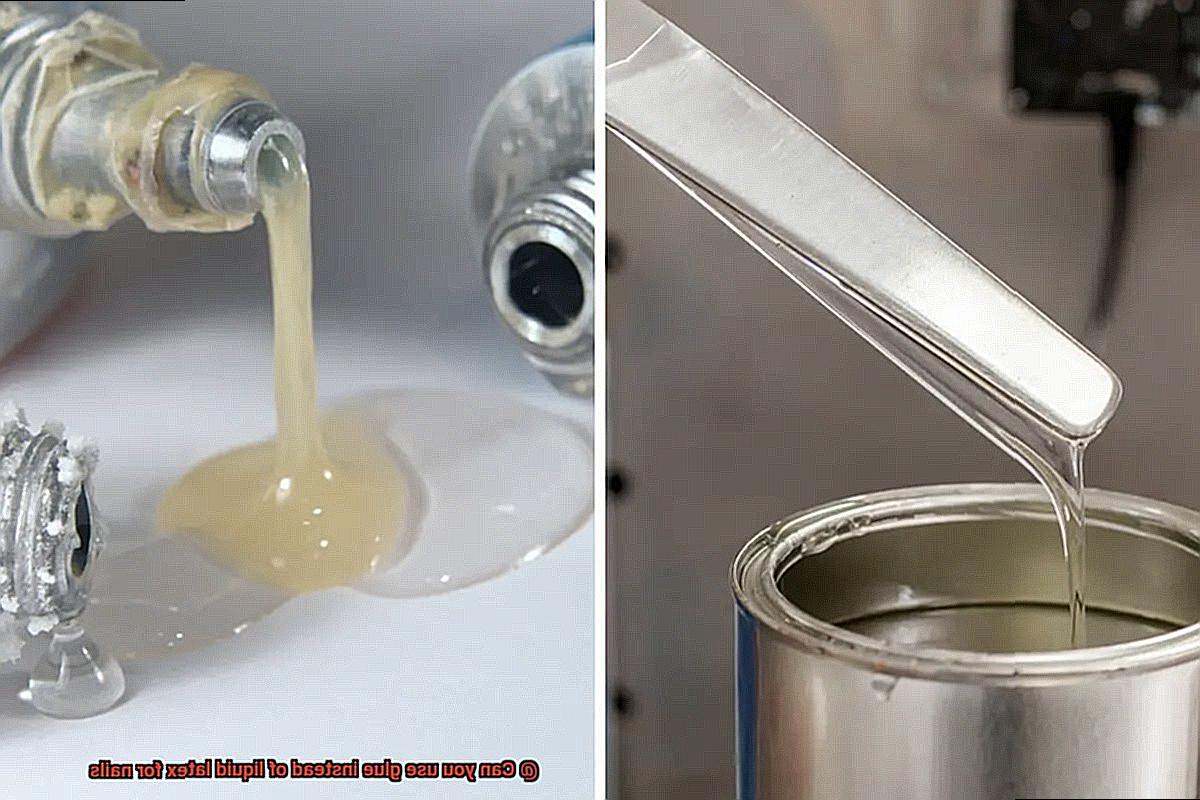
Clean and Dry the Skin
Before applying nail glue as a skin barrier, make sure the skin is clean and dry. Remove any oils or moisturizers from the skin, as they can affect the adhesive properties of the glue. Use a gentle cleanser or warm water to thoroughly cleanse the skin, and pat it dry with a soft cloth.
Prepare the Glue
Squeeze a small amount of nail glue onto a clean surface, like a piece of wax paper or a disposable palette. This will make it easier to apply the glue smoothly and evenly.
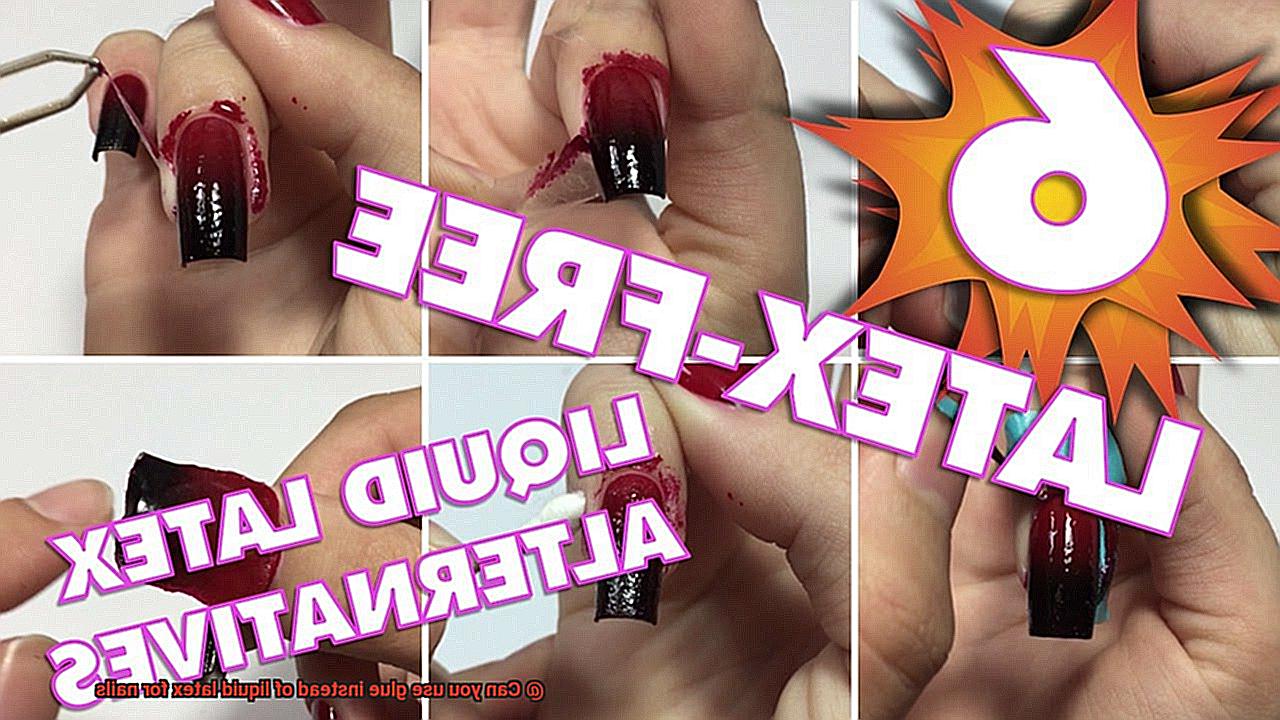
Apply the Glue
Using a clean cotton swab or an applicator brush, carefully apply a thin layer of glue around the edges of your nails. Create a barrier between the nail and the surrounding skin by covering the areas that you want to protect. Be precise and avoid getting the glue on your actual nails or cuticles, as it can be difficult to remove later.
Allow it to Dry
Let the nail glue dry completely before proceeding with your nail application. This usually takes a few minutes, but drying time can vary depending on the brand and type of nail glue you’re using. Avoid touching or rubbing the glued areas to prevent smudging or displacement.
Apply Nail Products
Once the glue has dried, you can proceed with applying your desired nail polish or other nail products. The glue will create a protective barrier, preventing any polish from seeping onto the skin and causing staining or irritation. Take your time and apply your nail products in smooth, even strokes.
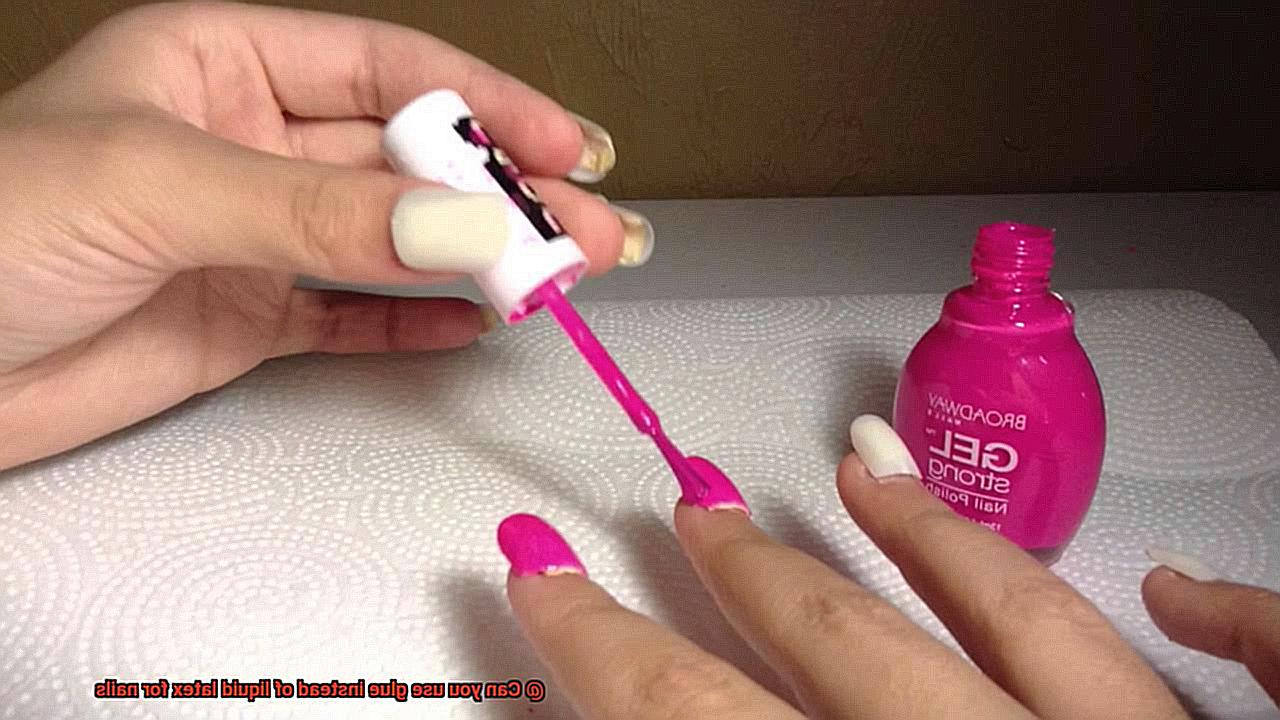
Remove the Glue Barrier
After you’ve finished applying your nail products, gently peel off the dried glue barrier. Start at one edge and slowly lift it away from the skin. Be careful not to pull or tug on the skin, as this can cause discomfort or damage. If any residue remains, use a gentle cleanser or warm water and a soft cloth to remove it.
Odor Considerations when Using Nail Glue
When it comes to getting the perfect manicure, using nail glue can be a game-changer. However, it’s important to consider the odor that comes along with it. The strong smell emitted by nail glue can be overwhelming and unpleasant for some individuals, especially those who are sensitive to strong smells or have respiratory issues. But fear not. There are ways to address the odor and make your nail application experience more enjoyable.
First and foremost, make sure to use nail glue in a well-ventilated area. This means opening windows or using a fan to help dissipate the smell and ensure fresh air circulation. By doing so, you can reduce the concentration of the odor and create a more comfortable environment.
If you find that the odor becomes too overpowering, don’t hesitate to take breaks during the application process. Allowing fresh air into the room can help reduce exposure to the smell and prevent any discomfort. It’s all about finding a balance between achieving beautiful nails and maintaining a pleasant atmosphere.
Another consideration is to look for nail glues that advertise a low odor formula. These formulations are often made to have a less intense smell, making them more tolerable for those sensitive to odors. By opting for a low odor formula, you can still enjoy the benefits of nail glue without being overwhelmed by its scent.
Reading labels and ingredient lists is crucial when it comes to choosing the right nail glue. By being aware of any potential irritants or allergens, you can avoid adverse reactions or heightened odor. Pay attention to any harmful chemicals that may be present in the glue, as they can contribute to an unpleasant smell and potentially harm your health.
If the odor of nail glue is persistently strong and bothersome, it may be worth exploring alternative options such as liquid latex. Liquid latex generally has a milder scent compared to traditional nail glue. It provides similar benefits like protecting the skin around the nails during polish application but without the overpowering smell. However, it’s important to note that liquid latex may not have the same adhesive properties as nail glue, so it may not be suitable for certain nail art techniques or long-lasting manicures.
Additional Benefits of Liquid Latex
Liquid latex is not just for nail art; it boasts numerous additional benefits that make it a versatile and indispensable product. Let’s explore these additional advantages in detail:
- Protective Barrier: Liquid latex acts as a shield, creating a protective barrier between the nail polish and the skin when used as a base coat. This barrier prevents accidental smudging or staining of the skin during the manicure process. Whether you have shaky hands or are working on intricate nail designs that require precision, liquid latex has got you covered.
- Easy Clean-Up: Say goodbye to tedious clean-up with cotton swabs and nail polish remover. Liquid latex doubles as a peel-off mask. After applying it around the nails, any excess nail polish that lands on the skin can be effortlessly peeled off along with the latex. This leaves behind a clean and tidy manicure, saving you time and effort.
- Nail Protection: Some nail products contain harsh chemicals that can weaken and damage your nails over time. By applying liquid latex as a base coat, you create a barrier that shields your nails from direct contact with these harmful substances. This reduces the risk of damage and keeps your nails looking healthy.
- Precision Nail Designs: Liquid latex is an invaluable tool for creating gradient or ombre nail designs. By applying it around the cuticles and fingertips, a protective barrier is formed, catching any excess polish during the sponging technique used for gradient nails. This makes clean-up a breeze and results in more precise and professional-looking designs.
- Beyond Nail Art: Liquid latex extends its usefulness beyond nail art to various creative endeavors such as costume makeup application, body painting, and special effects makeup. Its ability to create clean edges and easily peel off makes it an ideal choice for achieving flawless results in these applications as well.
- Sensitive Skin Friendly: For individuals with sensitive skin or allergies to certain ingredients found in nail products, liquid latex comes to the rescue. It acts as a protective barrier, preventing direct contact between the skin and potentially irritating substances, reducing the risk of adverse reactions.
Considerations when Choosing Between Glue and Liquid Latex
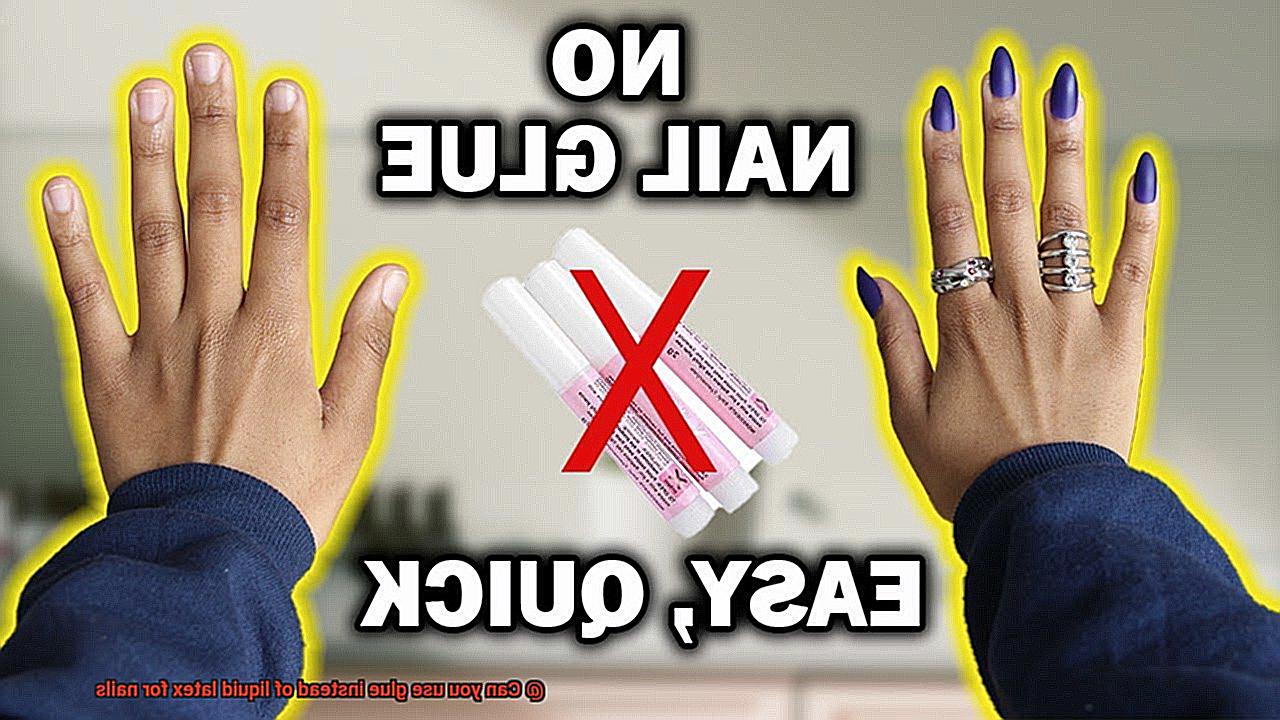
When deciding between glue and liquid latex for your nails, there are several important considerations to keep in mind. These considerations will help you make a well-informed decision that meets your specific needs and preferences.
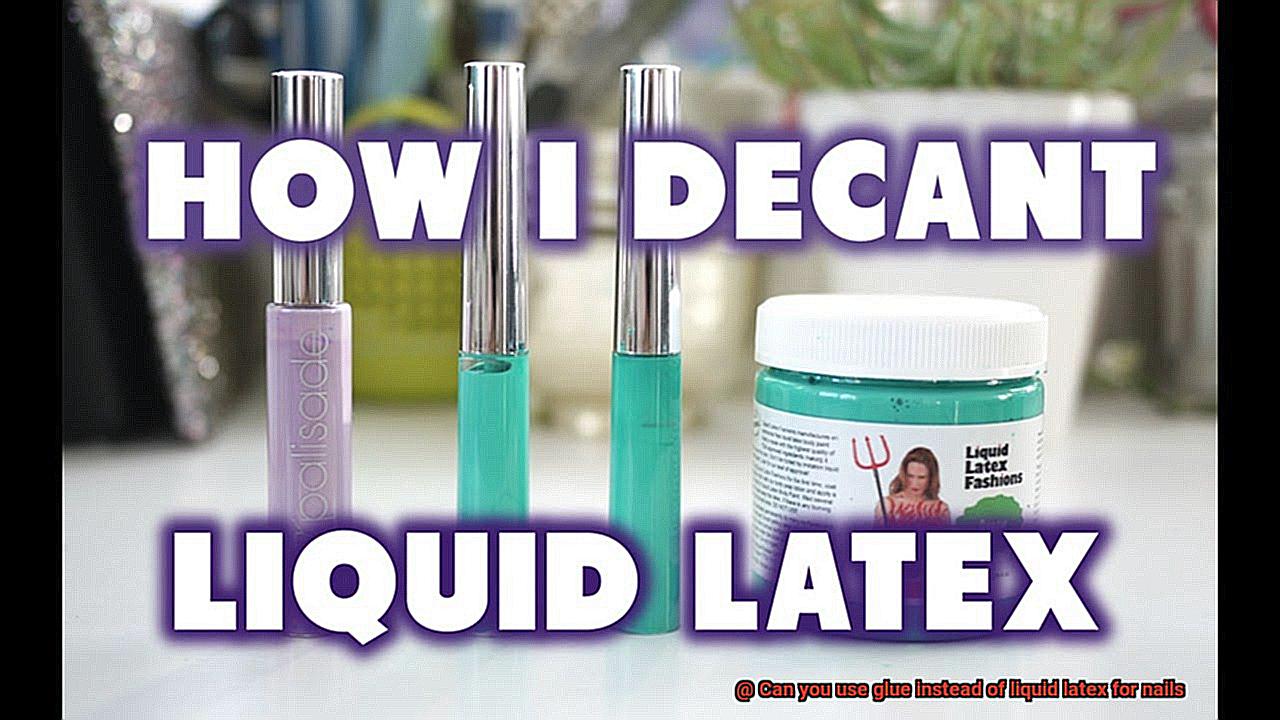
- Purpose: Determine the purpose for which you will be using the product. Glue is typically used for attaching artificial nails, while liquid latex serves as a protective barrier during nail art or other nail-related activities. Understanding your specific purpose will help guide you towards the right product.
- Adhesion: Consider the strength of adhesion you require. Glue generally provides a stronger bond than liquid latex. If you need a long-lasting and secure attachment for artificial nails, glue is the way to go. However, if you’re using liquid latex as a barrier for nail art, adhesion strength may not be as crucial.
- Sensitivity: Take into account any sensitivities or allergies you may have to certain ingredients. Some people react to chemicals found in glue, such as formaldehyde or cyanoacrylate. Liquid latex is usually hypoallergenic and less likely to cause adverse reactions. For those with sensitive skin or known allergies, liquid latex is the safer option.
- Ease of Use: Consider how easy each product is to apply and remove. Glue requires precise application and can get messy if not used carefully. On the other hand, liquid latex is easier to apply with a brush or sponge applicator and can be easily peeled off once dry, leaving no residue.
- Drying Time: Think about how quickly each product dries. Glue typically dries quickly, allowing for faster application of artificial nails or other enhancements. Liquid latex, however, may take longer to dry completely, especially when applied in thicker layers. If you’re short on time or prefer a quicker process, glue may be the better choice.
- Cost: Consider your budget and how often you’ll be using the product. Glue is generally more affordable and widely available, while liquid latex can be slightly more expensive. Keep in mind that costs may vary depending on the brand and quality. Take your budget into account before making a decision based on cost.
FZNRvexW1Ak” >
Conclusion
In conclusion, the decision to use glue or liquid latex for nail applications requires careful consideration of their respective advantages and disadvantages. Nail glue offers strong adhesion, dries quickly, is versatile, long-lasting, readily available, affordable, and compatible with various nail types. However, it should never be used as a base or top coat on natural nails and can have harmful effects on the skin if not used correctly.
On the other hand, liquid latex provides a protective barrier, easy clean-up, safeguards nails from harmful chemicals, allows for precise nail designs, offers versatility beyond nail art, and is suitable for sensitive skin. It proves particularly beneficial in preventing staining or skin damage during manicures.
When making your choice between glue and liquid latex for your nails, consider factors such as your specific purpose (attaching artificial nails or protecting the skin), desired adhesion strength, sensitivity to ingredients, ease of use, drying time requirements, and budget.
Ultimately, there’s no harm in experimenting with different methods to find what works best for you. Whether you opt for glue or liquid latex in your nail applications, always follow instructions carefully and prioritize safety.


